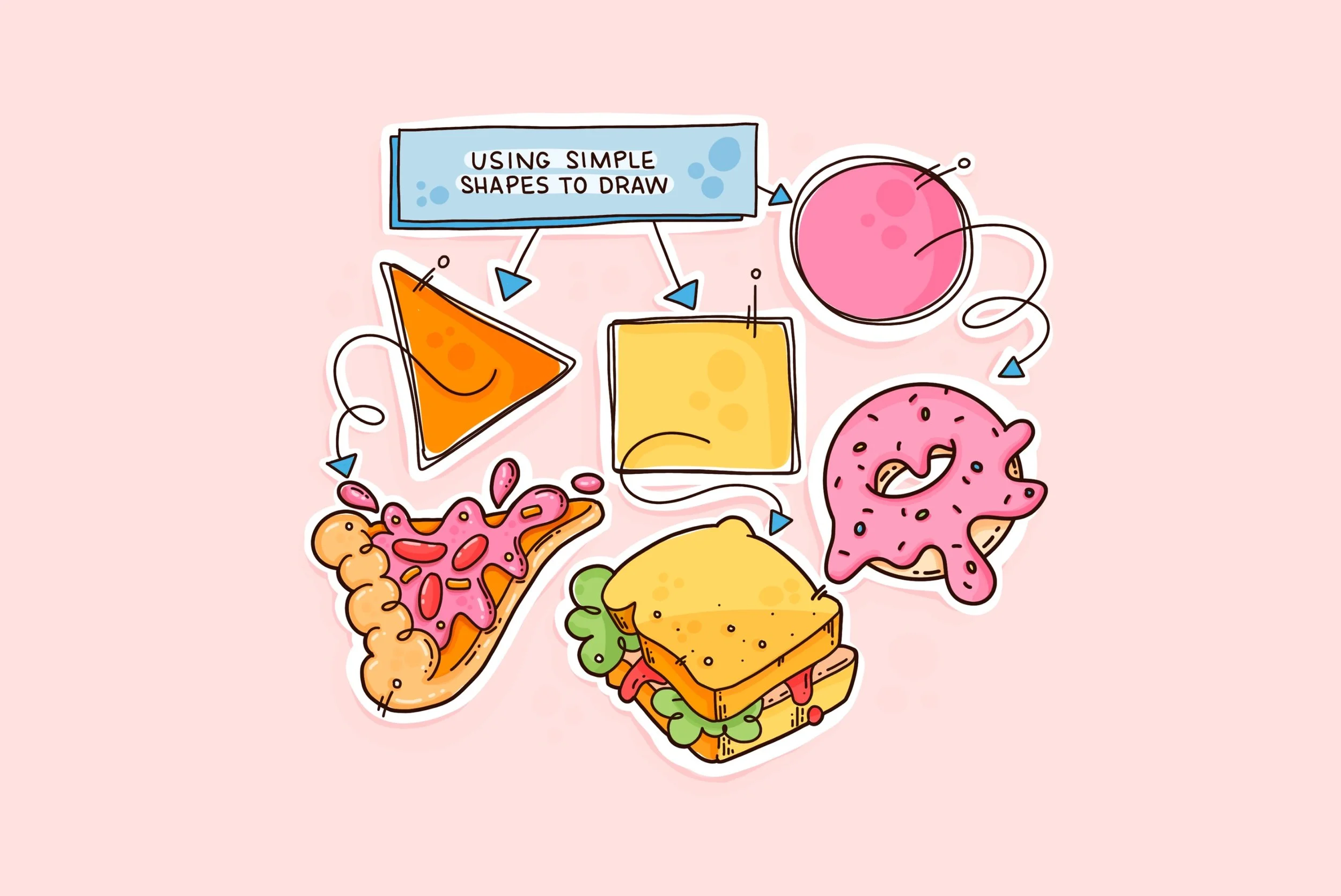How to start my sketchnotes
The process
Sketchnotes can be fast and messy. You can create your visual notes in real time—as you listen and watch you are sketchnoting. This can be really difficult to do successfully and needs loads of practice. Instead I prefer a two-stage process. The two-stage process consist of first taking real-time notes from the lecture and then revisiting these notes when they’re still fresh in your mind with a targeted creative approach. This could include expressive hand lettering, inky calligraphy or really any process where you can lose yourself in the experience and make those connections concrete. This two-stage process is all about transforming your notes into engaging and creative masterpieces.
Use the page
An advantage of sketch-noting vs keyboarding is that you can record the information in a non-linear method. Meaning you are not confined to writing from left to right or top to bottom, instead you have the option to start and finish your notes anywhere on the page. Incorporating some sort of grid and hierarchy on the page will ensure structure and order to the information and will allow for easier navigation of the page.
Learn to listen
Listen for cues. Hearing is different to listening. Listening take focus, concentration and intension. It is easy for your mind to wander. One thought lead to another and before you know it you are thinking about something entirely different and have missed what the presenter has said. Stay on track! It’s tough but with practice you will become a better sketchnote listener.
Putting it together
A few things to start with is to use simple shapes to simplify the image, practice drawing quickly and loosely, you can draw over it later to clean it up. Think of the most effective image that you could use to represent what you are documenting. Make sure to add context using words with your images. Think about how you layout the information. You could start by sectioning the page to create structure and the filling in all the information as you go. You can add handwritten lists, bullet points, images, symbols, diagrams, arrows, or containers. You could revisit with calligraphy to create flow or hand lettering to express personality. The hierarchy that you emphasise on the page will determine how your audience will read the page.
You don’t have to be an “ARTIST” or have incredible drawing skills. You can make it really personal and not share with anyone or you can share what you have learned with others. Make your sketchnotes work for and what you need them for.
Here’s a tip: A quick method to create your sketches is first using a coloured pencil—all messy and loose (rather than using lead pencil). Followed by using a fine point marker on the lines that work. By using a coloured pencil means you don’t need to erase the pencil marks as the coloured lines work as shading. By using this process, you will create fast and interesting sketchnotes in no time without having to erase those dirty lead pencil marks.




